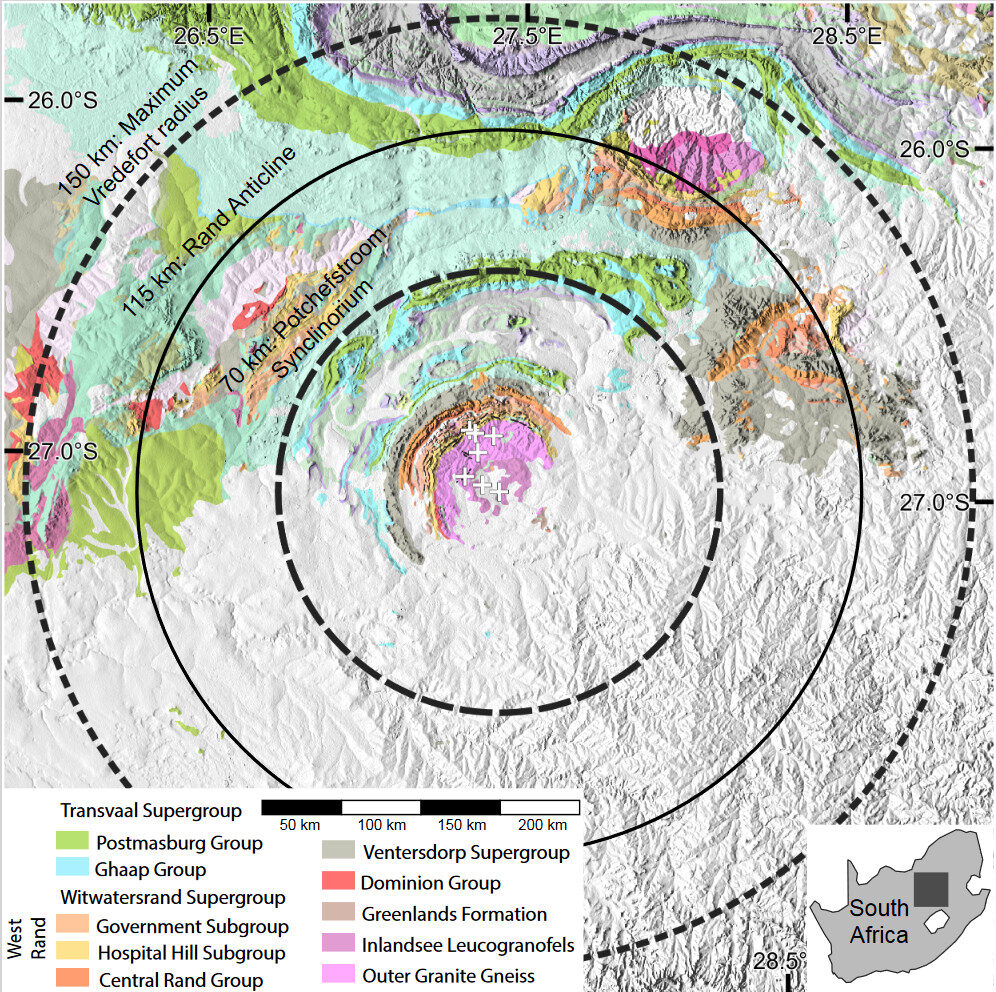
© Huber et al. (2023), JGR PlanetsImpact craters and their broader structures can be visible in a geologic map, like a bullseye. But what geophysical traces remain at the structure’s outermost edges?
WASHINGTON — Earth's oldest craters could give scientists critical information about the structure of the early Earth and the composition of bodies in the solar system as well as help to interpret crater records on other planets. But geologists can't find them, and they might never be able to, according to
a new study. The study was published in the
Journal of Geophysical Research Planets, AGU's journal for research on the formation and evolution of the planets, moons and objects of our Solar System and beyond.
Geologists have found evidence of impacts, such as ejecta (material flung far away from the impact), melted rocks, and high-pressure minerals from more than 3.5 billion years ago. But the actual craters from so long ago have remained elusive. The planet's oldest known impact structures, which is what scientists call these massive craters, are only about 2 billion years old. We're missing two and a half billion years of mega-craters.
The steady tick of time and the relentless process of erosion are responsible for the gap, according to Matthew S. Huber, a planetary scientist at the University of the Western Cape in South Africa who studies impact structures and led the new study.
"It's almost a fluke that the old structures we do have are preserved at all," Huber said. "There are a lot of questions we'd be able to answer if we had those older craters. But that's the normal story in geology. We have to make a story out of what's available."
Geologists can sometimes spot hidden, buried craters using geophysical tools, such as seismic imaging or gravity mapping. Once they've identified potential impact structures, they can search for physical remnants of the impact process to confirm its existence, such as ejecta and impact minerals.
